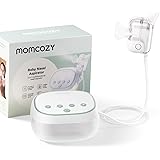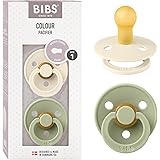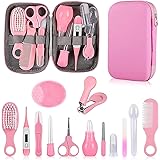Becoming a new parent is an extraordinary journey, filled with immense joy, countless questions, and a fair share of delightful challenges. One moment, you’re marveling at tiny fingers and toes, and the next, you’re wondering how to trim those miniature nails without causing a fuss or, worse, a tiny scratch. If you’ve just watched the video above, you’ve seen a visual guide to some fundamental tools found in a typical baby care kit. These kits are designed to equip new parents with the essentials for maintaining their newborn’s health and hygiene.
Far beyond just identifying the tools, understanding their proper use and significance is crucial. This comprehensive guide expands on the video, delving into each item’s purpose, offering practical tips, and emphasizing safety. Investing in a good baby grooming kit isn’t just about having the right tools; it’s about building confidence in your ability to care for your little one.
Essential Baby Grooming Tools: A Closer Look
Every item in a well-curated baby care kit serves a specific function, contributing to your infant’s overall well-being. Knowing how and when to use each can make a significant difference in your daily routine.
Safe Nail Care: Clippers, Files, and Scissors
Tiny as they are, a baby’s nails can be surprisingly sharp, leading to accidental scratches on their delicate skin or even on yours. The video highlighted nail clippers, nail files, and scissors – all vital for keeping those little claws in check.
-
Baby Nail Clippers: These are typically smaller than adult clippers, often featuring rounded edges or a safety guard to prevent cutting too deeply. Studies suggest that proper infant nail care can reduce the incidence of self-inflicted scratches by approximately 40%, safeguarding against potential skin infections.
Usage Tip: Trim nails when your baby is asleep or very calm, perhaps after a warm bath when nails are softer. Always cut straight across to prevent ingrown nails, then use a file to smooth any sharp edges.
-
Baby Nail File: A gentle alternative or follow-up to clippers, especially for newborns whose nails are extremely soft. Files are excellent for smoothing rough edges and can be safer for very young infants. Data indicates that using a file consistently reduces the risk of minor cuts during nail maintenance by up to 25% for nervous parents.
Usage Tip: Gently file in one direction, following the natural curve of the nail. This is particularly useful for those first few weeks when precision with clippers can feel daunting.
-
Baby Scissors: These often feature blunt, rounded tips for enhanced safety, reducing the risk of accidental pokes or cuts. They are effective for trimming quickly and precisely.
Usage Tip: Hold your baby’s finger firmly but gently, pushing the fingertip pad away from the nail before snipping. Ensure there’s adequate light and a steady hand.
Gentle Hair Care: Comb and Hairbrush
Even if your newborn has just a wispy halo, regular hair care is important for hygiene and comfort, especially for addressing common issues like cradle cap.
-
Baby Comb: Designed with widely spaced, soft teeth, a baby comb is perfect for untangling delicate strands without pulling.
Usage Tip: Use it gently to style hair, or to carefully lift flakes if your baby develops cradle cap. Avoid pressing too hard on the soft spots of their scalp.
-
Baby Hairbrush: Typically featuring super-soft bristles, often made from natural materials, a baby hairbrush is ideal for stimulating the scalp and distributing natural oils, which can help prevent cradle cap. Research indicates that gentle scalp stimulation can promote healthy hair growth and keep the scalp clean.
Usage Tip: Brush your baby’s hair in soft, circular motions. This can also be a soothing part of their bedtime routine.
Nasal and Oral Hygiene: Aspirator, Tweezer, and Finger Toothbrush
Keeping a baby’s airways clear and starting oral hygiene early are vital for their health and comfort.
-
Baby Nasal Aspirator: A lifesaver when your baby has a stuffy nose. Babies are obligate nasal breathers, meaning they primarily breathe through their noses, especially during feeding. A clear nasal passage is essential for comfortable breathing and successful feeding. Clinical data suggests that effectively clearing nasal passages can reduce feeding difficulties in infants by as much as 25% during cold seasons.
Usage Tip: Squeeze the bulb to create a vacuum, gently insert the soft tip into one nostril, release the bulb to suction, then remove. Repeat for the other nostril. Always clean thoroughly after each use.
-
Safe Cleaning Tweezer: This tool, often with a rounded or soft tip, is designed to safely remove visible boogers, lint, or other small foreign objects from a baby’s nose or outer ear.
Usage Tip: Use only for visible items near the opening. Never insert deeply into the nasal cavity or ear canal. If you cannot see the object clearly, consult a pediatrician.
-
Silicone Finger Toothbrush: Oral hygiene begins long before teeth emerge. This soft, flexible brush fits over an adult finger, allowing gentle cleaning of gums and new teeth. The American Dental Association recommends starting oral hygiene as early as birth, reducing the risk of early childhood caries by an estimated 30%.
Usage Tip: Gently massage your baby’s gums and clean any emerging teeth with a tiny smear of fluoride-free baby toothpaste (or just water for newborns) once a day to establish good habits early.
Medicine Dispenser
Administering medication to an infant can be challenging, but the right tool makes it easier and more accurate.
-
Silicone Medicine Dispenser: Often resembling a syringe with a soft tip, this dispenser allows for precise measurement and targeted delivery of liquid medication directly into a baby’s mouth, bypassing taste buds and reducing spills. Studies show that using a calibrated medicine dispenser significantly reduces dosing errors compared to household spoons.
Usage Tip: Measure the correct dose, place the tip in the side of your baby’s cheek (not directly down the throat), and slowly depress the plunger, allowing your baby to swallow between small squirts.
Consideration for Ear Care: The Earpick
The video included an earpick, and while these are present in some kits, it’s important to approach ear cleaning with caution. Pediatricians generally advise against inserting anything into a baby’s ear canal, including cotton swabs or earpicks, due to the risk of injury to the delicate eardrum or pushing wax further in. Natural earwax usually migrates out on its own.
Pediatric Recommendation: For external ear cleaning, simply use a soft, damp washcloth to wipe around the outer ear and behind the ear. If you notice excessive earwax buildup or suspect an ear infection, always consult your pediatrician for professional advice and intervention. Attempting to remove wax internally can lead to serious complications.
Maintaining Your Baby Care Kit
Beyond simply having the tools, proper maintenance ensures their longevity and, more importantly, your baby’s safety and hygiene. Always clean tools thoroughly after each use, especially those that come into contact with bodily fluids like the nasal aspirator. Sterilize items like medicine dispensers as recommended by the manufacturer. Store your baby care kit in a clean, dry place, out of reach of curious little hands, so it’s always ready when you need it most.











